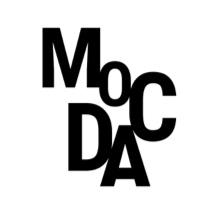Not Only RGB (Decentraland, October 2022-June 2023) is a MoCDA group show supported by Decentraland DAO featuring works created by Kevin Abosch, Matt Kane, 38‰ (Mattia Cuttini and Luca Donno), Sarah Meyohas and Mathieu Merlet-Briand.
This is a Q&A session featuring curators Chiara Braidotti and Anastasia Pineschi in conversation with artist Kevin Abosch.

Sun Signals translates solar data like location, trajectory, and radiation levels into visual compilations. What role did your scientific background play into the conception of this work? And was there a dataset that was particularly compelling for you to translate into a visual language?
I use the tools of science and technology in ways that suggest scientific methods, but the fact that my results are not repeatable reveals that my work is not scientific. I work ritualistically, back and forth with technology in a feedback loop. I come under the influence of machine-learning algorithms and data in order to witness truths that I might not otherwise. For Sun Signals, I worked with a tremendous amount of data, but perhaps it’s the data around solar radiation and local temperatures that feels most significant for its implications in climate change. That said, Sun Signals are not simple data visualisations. They are visual manifestations of the emotional distillation of the underlying data.
The use of blockchain as an activist medium is a critical aspect of this work, especially when considering that the Sun Signals are generated on solar powered grids and the work feeds into the greater ‘green’ satellite project KOSMOS 1111. How do you see the role of blockchain within the greater activist narrative?
I’ve always felt that the implicit promise of the blockchain was to move power from traditional power structures to the citizens. In this sense, it is an activist platform. In practice, however, this might be difficult to appreciate. Where there are deficiencies in the technology, perhaps exemplified by the discussion around blockchain’s energy consumption, we have seen efforts to make improvements. It’s a work in progress. To be clear, I’m not one who believes you can bolt the blockchain onto anything and it’s better. That’s naive in my view.
You’ve described this work as an "intervention leveraging the very technology it endeavours to evolve". Would you expand on what that means to you?
By harnessing solar energy to power my computers, I am in a very small way making a contribution towards mitigating the real problem of reckless energy consumption. The resultant artworks, the NFT’s, are not final. They are fixed as intermediaries between their preparatory state and the multitude of states they will be engaged by an audience. An intervention might seem fixed in time, but its legacy echoes indefinitely.

Comments